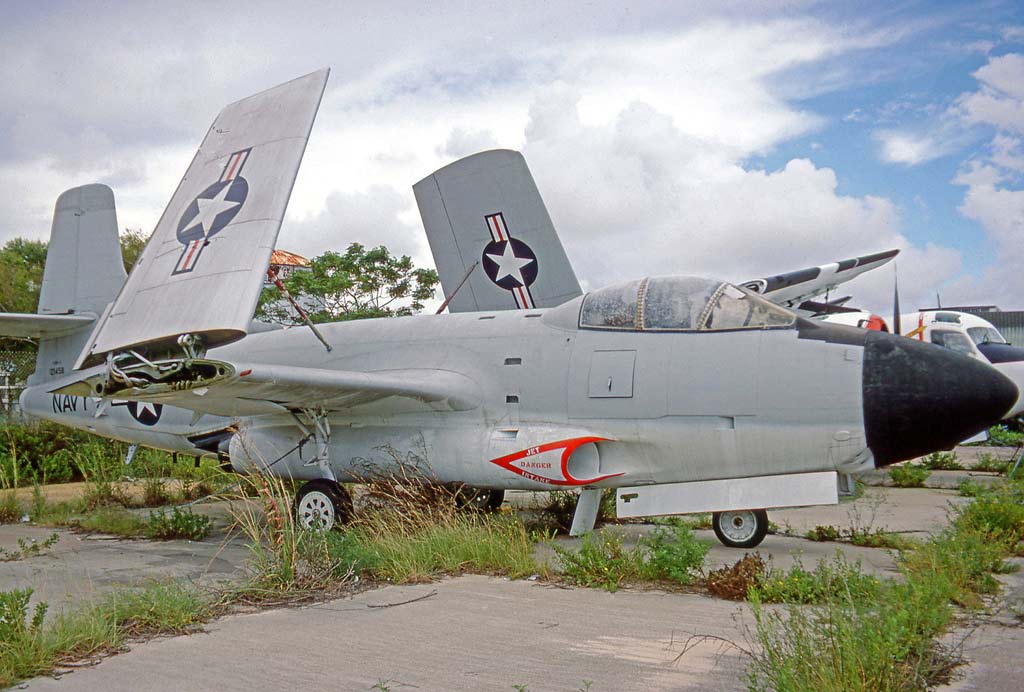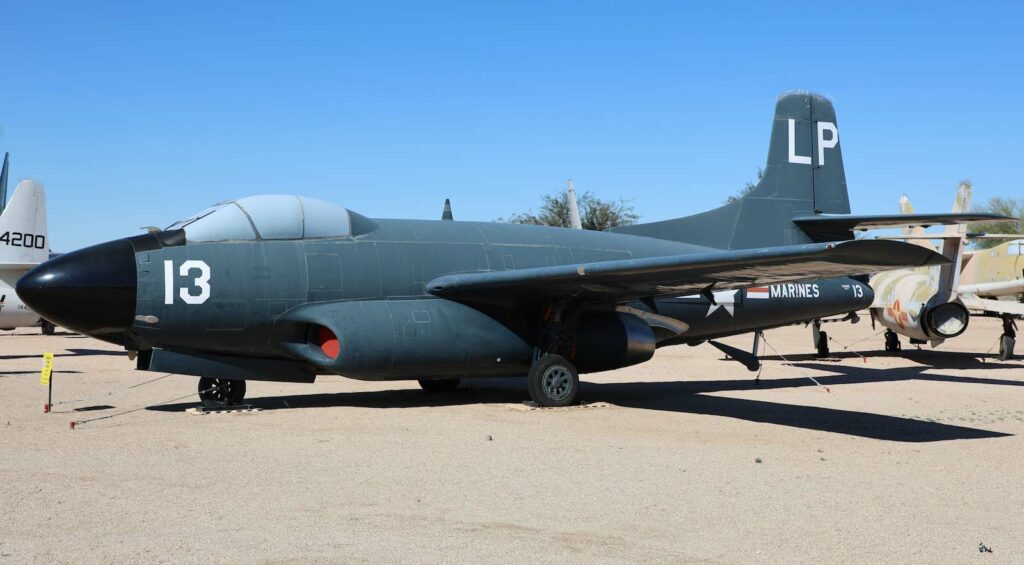The Douglas F3D Skyknight was a U.S. Navy all-weather, carrier-based jet fighter and the first to have radar.
In brief
The Douglas F3D Skyknight, later designated F-10, was an American twin-engine, all-weather, carrier-based fighter aircraft. Developed by Douglas Aircraft Company during the early Cold War, it was distinguished by its radar-equipped, wide fuselage, which earned it the nickname “Willie the Whale.” As a night fighter, it played a crucial role in the Korean War, providing valuable radar countermeasures and air support. The Skyknight was not designed for speed or agility but for reliability and electronic capability, making it a unique asset in the U.S. Navy’s and Marine Corps’ aviation fleet, and the only U.S. Navy fighter to have a perfect safety record during the Korean War.
The Douglas F3D Skyknight was a testament to early jet age innovation, marking a significant leap in naval aviation capability. It was specifically designed to fulfill the need for a capable all-weather, night-fighting aircraft aboard carriers, a requirement that became increasingly critical during the Cold War era.

History of the Development of the Douglas F3D / F-10 Skyknight
In the post-World War II era, as tensions escalated into the Cold War, the United States Navy recognized the necessity for a robust all-weather fighter that could protect fleets and conduct missions regardless of the time of day or weather conditions. The Douglas Aircraft Company responded to this need with the F3D Skyknight, first flown on March 23, 1950.
The program’s development was characterized by the focus on incorporating radar technology into a jet-powered aircraft, ensuring superior night and all-weather capabilities. The Navy’s need for such an aircraft was underscored by the limitations of existing fighters in night and adverse weather operations, which were crucial in the growing strategic emphasis on round-the-clock, all-condition readiness.
The F3D was designed with a spacious fuselage to accommodate radar equipment and a crew of two — the pilot and the radar operator. Despite lacking the sleek lines and speed of contemporary fighters, its design prioritized functionality and electronic warfare capabilities. It was one of the first aircraft to be fitted with air intercept radar, a significant technological advancement at the time.
Design of the Douglas F3D / F-10 Skyknight
The Douglas F3D Skyknight’s design was unconventional compared to other fighters of its time. It had a large, wide fuselage necessary to house the radar equipment and crew, contributing to its less aerodynamic appearance and the “Willie the Whale” nickname. The aircraft featured straight wings and was powered by two Westinghouse J34-WE-34 turbojet engines.
In terms of dimensions, the F3D was approximately 45 ft (13.7 m) in length with a wingspan of 50 ft (15.2 m). The spacious cockpit accommodated two crew members sitting side by side, a pilot and a radar operator, an arrangement that was innovative for its time.
While the bulky design reduced top speed and maneuverability, it allowed for the advanced radar and electronic equipment that were its primary assets. The Skyknight was also notable for its ruggedness and operational reliability, particularly in the challenging environment of carrier operations.
Performance of the Douglas F3D / F-10 Skyknight
The Douglas F3D Skyknight’s performance was geared more towards reliability and all-weather capability than speed or dogfighting prowess. It had a maximum speed of around 580 mph (933 km/h) and a range of approximately 1,200 miles (1,931 km) with external tanks. The service ceiling was about 27,000 ft (8,230 m).
While it was not as fast or agile as other fighters of its era, such as the North American F-86 Sabre or the Soviet MiG-15, its advanced radar and electronics made it a formidable night and all-weather interceptor. The Skyknight’s ability to operate effectively under conditions that grounded other aircraft made it a valuable asset in maintaining air superiority during nighttime and adverse weather.
Variants of the Douglas F3D / F-10 Skyknight
Several variants of the Douglas F3D Skyknight were produced to fulfill different roles and incorporate various technological upgrades. The primary production variants were the F3D-1 and F3D-2, with improvements in radar and armament. The F3D-2 saw the most significant production and featured more powerful engines and enhanced radar systems. Later, the F3D-2N and F3D-2M variants were developed as night fighters and missile carriers, respectively.

Military Use and Combat of the Douglas F3D / F-10 Skyknight
The Douglas F3D Skyknight’s military career was highlighted by its service during the Korean War, where it was one of the few U.S. aircraft capable of confronting the enemy at night. It was used extensively as a night fighter, intercepting opposing aircraft with its advanced radar and providing air cover for ground forces. The Skyknight’s electronic warfare capabilities also made it an early platform for electronic countermeasures.
The Skyknight did not participate in traditional dogfights but instead used its radar to locate and engage enemy aircraft at night or under poor visibility conditions. Its armament typically consisted of four 20 mm cannons, providing substantial firepower once it had closed in on its target.
After its successful deployment in Korea, the Skyknight continued to serve in various capacities, including as a test platform for emerging technologies and in training roles. However, as newer, faster, and more versatile aircraft were developed, the Skyknight was gradually phased out of front-line service.
The Douglas F3D / F-10 Skyknight holds a unique place in aviation history as one of the first successful all-weather, carrier-based jet fighters. Its development was a response to the specific needs of naval aviation during a critical period, and it met those needs effectively with its advanced radar and robust design. While it may not have been the fastest or most agile fighter of its time, its contributions to night and all-weather operations, as well as electronic warfare, were invaluable. The Skyknight’s legacy is a testament to the importance of technological innovation and adaptability in military aviation.
Back to the Fighter Jet section.